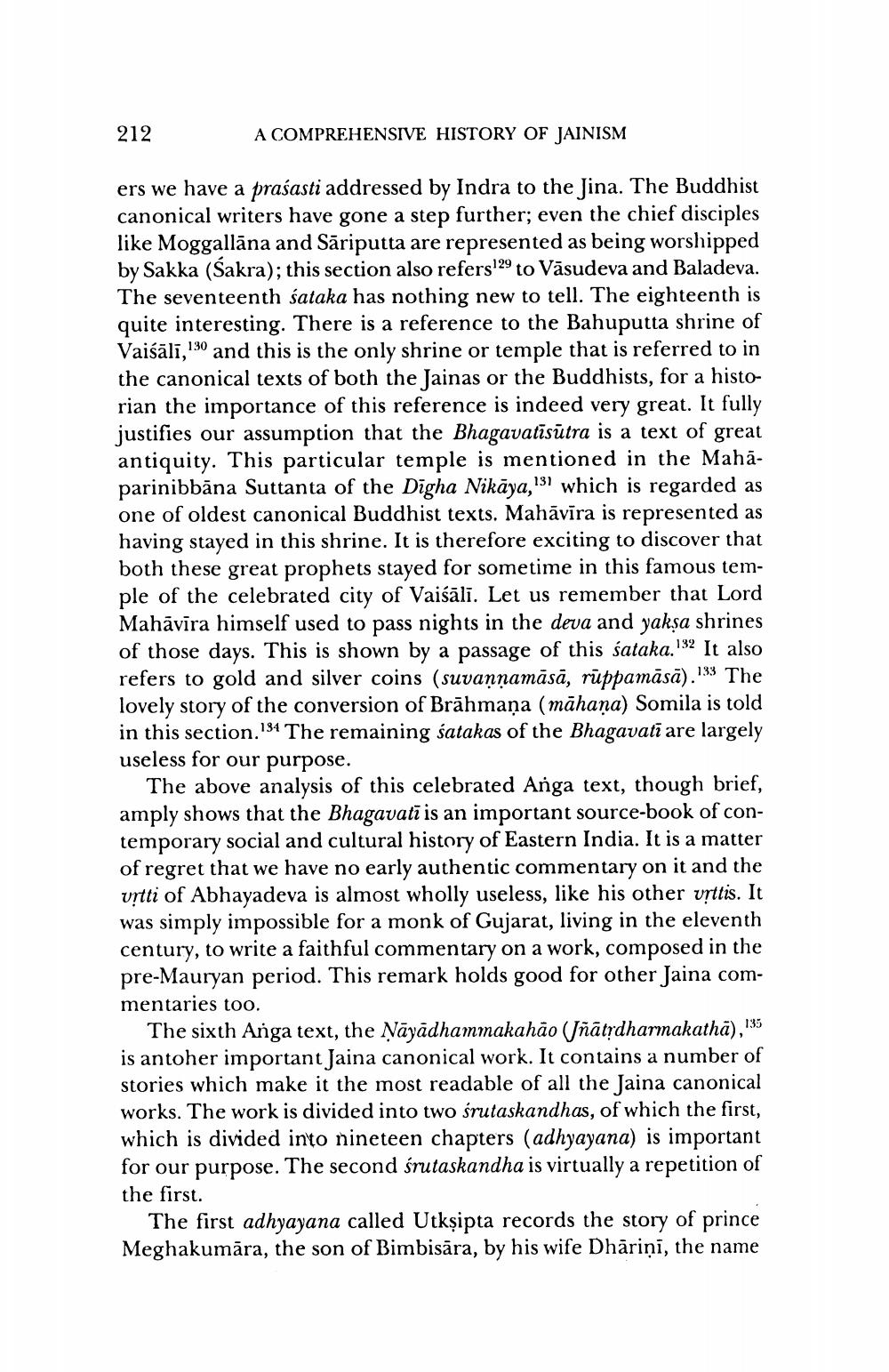________________
212
A COMPREHENSIVE HISTORY OF JAINISM
ers we have a prasasti addressed by Indra to the fina. The Buddhist canonical writers have gone a step further; even the chief disciples like Moggallāna and Sāriputta are represented as being worshipped by Sakka (Sakra); this section also refers!29 to Vāsudeva and Baladeva. The seventeenth śataka has nothing new to tell. The eighteenth is quite interesting. There is a reference to the Bahuputta shrine of Vaiśālī,'30 and this is the only shrine or temple that is referred to in the canonical texts of both the Jainas or the Buddhists, for a historian the importance of this reference is indeed very great. It fully justifies our assumption that the Bhagavatīsūtra is a text of great antiquity. This particular temple is mentioned in the Mahaparinibbāna Suttanta of the Dīgha Nikāya,131 which is regarded as one of oldest canonical Buddhist texts. Mahāvīra is represented as having stayed in this shrine. It is therefore exciting to discover that both these great prophets stayed for sometime in this famous temple of the celebrated city of Vaiśāli. Let us remember that Lord Mahāvīra himself used to pass nights in the deva and yakṣa shrines of those days. This is shown by a passage of this sataka.132 It also refers to gold and silver coins (suvannamāsā, rūppamāsā).133 The lovely story of the conversion of Brāhmaṇa (māhaņa) Somila is told in this section. 134 The remaining satakas of the Bhagavati are largely useless for our purpose.
The above analysis of this celebrated Anga text, though brief, amply shows that the Bhagavatī is an important source-book of contemporary social and cultural history of Eastern India. It is a matter of regret that we have no early authentic commentary on it and the vịtti of Abhayadeva is almost wholly useless, like his other vịttis. It was simply impossible for a monk of Gujarat, living in the eleventh century, to write a faithful commentary on a work, composed in the pre-Mauryan period. This remark holds good for other Jaina commentaries too.
The sixth Anga text, the Nāyādhammakahão (jñātrdharmakathā), 135 is antoher important Jaina canonical work. It contains a number of stories which make it the most readable of all the Jaina canonical works. The work is divided into two śrutaskandhas, of which the first, which is divided into nineteen chapters (adhyayana) is important for our purpose. The second śrutaskandha is virtually a repetition of the first.
The first adhyayana called Utkṣipta records the story of prince Meghakumāra, the son of Bimbisāra, by his wife Dhārini, the name




